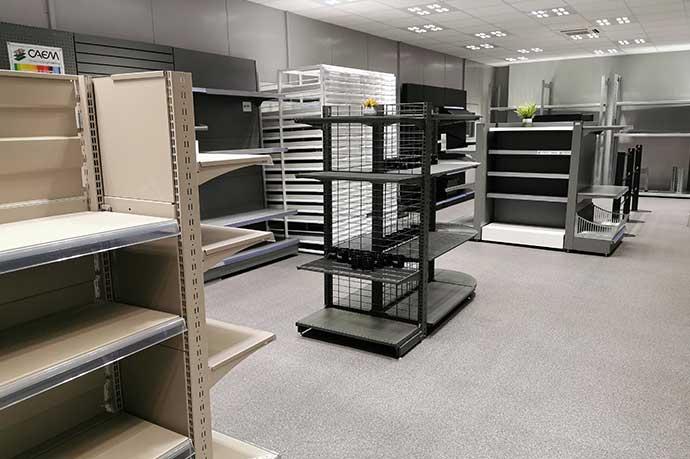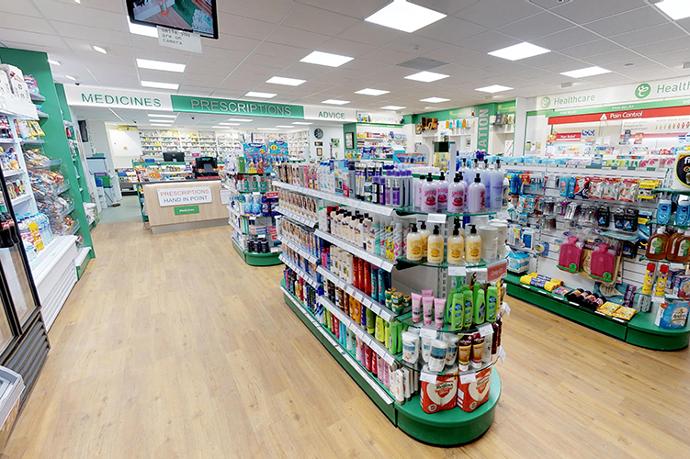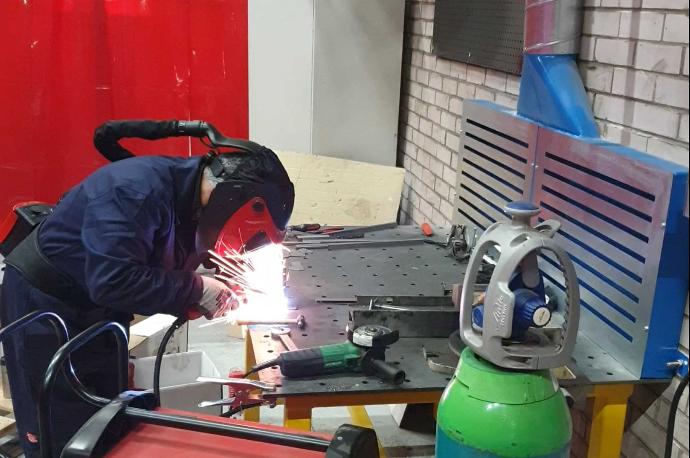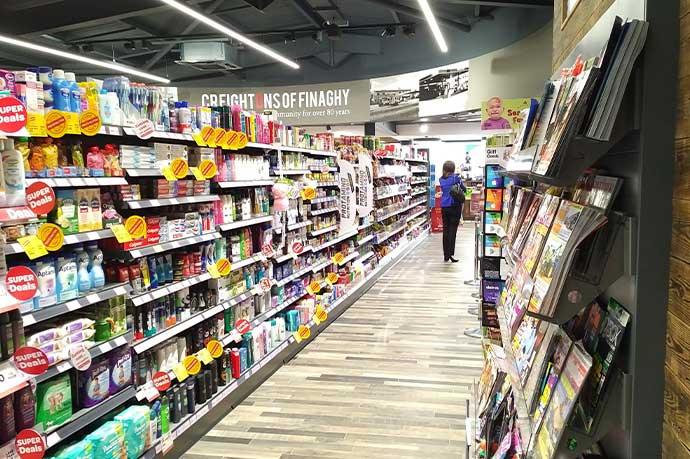Garden Centre Displays – Boost Sales with Stunning Designs
Effective garden centre displays are more than just a backdrop for plants; they are the engine driving sales, shaping customer experience, and defining your brand's presence. The UK garden centre industry has demonstrated remarkable resilience, with 203 million visits made to UK garden centres in 2024 and 68% of UK adults visiting at least once. From versatile plant benches to innovative rail systems and decorative backdrops, the right display choices can transform a retail space into an inspiring destination that capitalises on this substantial market opportunity.
Introduction to Garden Centre Displays
The Importance of Effective Displays in Garden Centres
First impressions count. When customers enter a garden centre, their senses are immediately engaged by colour, scent, and the thoughtful arrangement of displays. As Joe Baer, Co-founder and CEO of ZenGenius, emphasises, visual merchandising is fundamentally about "driving sales and celebrating your products, services, and ultimately, your brand". Garden centres must differentiate themselves from big-box competitors by creating compelling customer experiences through strategic display design.
Industry experts recognise that effective merchandising creates "moments, landmarks, and points of view" that enhance the customer journey. The fundamental principle is clear: "the better you can slow down shopper, the more they'll discover", allowing retailers to influence where customers spend the most time and ultimately drive purchasing decisions.
Key Benefits: Boosting Sales and Customer Experience
The impact of stunning garden centre displays is measurable. After strategic focus on visual merchandising and improved layouts, gardening sales in UK garden centres surged by 31% from March 2024 and an impressive 57% from March 2023. More recently, March 2025 saw garden centre sales increase by 21% compared to March 2024, particularly in bedding plants and plant care categories, demonstrating the ongoing importance of effective presentation.
Successful garden centres achieve revenue per square foot averaging $250, with industry leaders maintaining approximately 85% customer satisfaction rates. Well-crafted displays boost impulse purchases, increase dwell time, encourage cross-selling, and foster customer loyalty, turning casual browsers into loyal advocates.
Industry Benchmarks for Display Investment
Understanding performance metrics helps garden centres make informed decisions about display investments. Gross Margin Return on Investment (GMROI) serves as a fundamental metric, calculated as annual sales minus the cost of sales divided by inventory. Leading garden centres achieve inventory turnover ratios of 6.5 turns per year, indicating optimal stock movement through effective displays.
Digital signage integration has shown remarkable results, helping retailers increase in-store engagement by 35%, leading to higher conversion rates and improved cash flow. Garden centres can leverage digital displays to highlight seasonal specials or plant care information, with advanced analytics approaches enabling up to 25% increases in profitability according to Forrester Research.
Diverse Types of Display Benches
General Display Benches: Versatile Foundations
The backbone of any display centre, general benches provide a flexible, accessible platform for everything from bedding plants to decorative pots. Ebb & Flow benches (automated watering systems that flood and drain growing surfaces) represent one innovative solution, while modular systems (interconnectable display components that can be reconfigured) offer adaptability for changing stock and seasonal requirements.
Simplicity is their strength; these benches adapt easily to changing themes, seasonal stock, or shifting customer trends. Durability matters significantly, as frequent reconfiguration demands robust construction that can withstand regular adjustment without deteriorating.
Tiered Benches: Maximising Vertical Space
Tiered display benches are a masterstroke for showcasing more within the same footprint. Their stepped design ensures every product is visible, even those at the back, drawing the eye and inviting closer inspection. Following Baer's recommendation to display products in groups of three, these benches naturally showcase variety while giving customers visual "breather moments" to absorb the products.
Flood and Ebb & Flow Benches: Innovative Water Solutions
For high-turnover or water-sensitive stock, benches with integrated watering systems are invaluable. Ebb and Flow benches deliver consistent moisture through automated flooding and draining cycles, reducing manual watering and helping keep plants in peak condition with minimal effort. These solutions not only support plant health but also save valuable staff time, making them a smart investment for busy operations.
Rail Benches: Streamlined Design Advantages
Modern garden centres increasingly favour the minimalist look of rail benches. With open designs that enhance airflow and drainage, these benches keep plants healthy while offering a sleek, uncluttered appearance. Modular components allow for flexible configurations, adapting to diverse products and spaces with ease.
Material Comparison: Making Informed Choices
|
Material |
Pros |
Cons |
Best Use Cases |
|
|
Timber |
Natural aesthetic, cost-effective initially, easy to customise |
Requires regular maintenance, susceptible to rot and weather damage, limited modularity |
Indoor displays, temporary setups, heritage-style centres |
|
|
Steel |
High durability, fully modular, weather-resistant, long-term value |
Higher initial investment, may require powder coating for aesthetics |
Outdoor displays, high-traffic areas, permanent installations |
|
|
Aluminium |
Lightweight, corrosion-resistant, modern appearance |
Can be expensive, may lack warmth of natural materials |
Contemporary settings, mobile displays, weight-sensitive applications |
Specialised Display Elements
Tree Displays: Showcasing Larger Plants
Large trees deserve purpose-built display solutions that provide necessary stability and accessibility. These displays turn statement specimens into focal points that draw customers deeper into your centre, with customisable options ensuring safe, attractive presentation vital for both aesthetics and customer interaction.
Hanging Basket Displays: Adding Vertical Interest
Hanging baskets introduce height, movement, and a sense of abundance. By maximising vertical space, they add visual layers that invite shoppers to look up and explore. These displays prove especially effective for seasonal promotions, with sturdy construction guaranteeing both safety and style.
Promotional Benches: Highlighting Seasonal Offers
Seasonal offers and themed collections benefit from dedicated promotional benches. Quick to set up and easy to reposition, these units allow for rapid shifts in focus, essential for capitalising on trends and new arrivals. Strategic placement and clear messaging drive impulse purchases, supporting coordinated marketing efforts.
Decorative Back Panels: Enhancing Visual Appeal
Decorative back panels frame featured products and reinforce branding. These panels provide polished backdrops, support signage, and can offer additional information or point-of-sale messaging. For cohesive, professional presentations, back panels are essential finishing touches.
Design Strategies for Engaging Displays
Expert Insights on Visual Merchandising
Visual merchandising specialists at The HC Companies define the practice as a "silent salesperson" that combines "basic marketing principles, industry trends, product knowledge and creativity to deliberately present a retailer's inventory in a positive way." This approach proves particularly valuable for garden centres serving both experienced gardeners and newcomers seeking guidance.
Industry experts emphasise that effective merchandising creates transformative experiences. As one specialist notes: "When designing a store, we're not merely designing a selling centre, but rather an experience. Great Visual Merchandising will tell stories while transporting viewers to new places, new times, and new states of mind".
Creating Immersive Retail Environments
Baer recommends implementing pyramid stacking with key items at the top, surrounded by complementary products that work together to create strong presentations. While green dominates garden centres, he suggests playing with complementary or accent colors, along with different textures and materials to create visual interest.
Zoning divides centres into clearly marked areas for core ranges, impulse buys, and outdoor sections, making navigation intuitive and inspiring discovery. Sensory elements, from tactile surfaces to subtle scents, deepen immersion and elevate the shopping experience.
Fostering Customer Interaction and Engagement
The HC Companies recommend creating "educational displays with literature and demonstrations" since "an educated consumer is more likely to make a purchase." This proves especially valuable for inexperienced gardeners seeking guidance. Interactive displays increase dwell time and sales through hands-on demonstration zones, comfortable seating, and layouts that encourage exploration.
Cross-merchandising strategies work particularly well, such as "using planters to create height and visual interest and artfully placing bags of soil nutrients near the appropriate plants". This approach highlights new or lesser-known products throughout the store.
The Role of Lighting in Display Aesthetics
Lighting transforms spaces by bringing out the best in products, highlighting key areas, and guiding customer flow. Adjustable, layered lighting allows mood shifts with seasons, ensuring displays remain vibrant and inviting. LED shelf lighting adds both function and drama to retail presentations.
Theming and Seasonal Displays: Keeping It Fresh
Regularly refreshed themes keep displays dynamic. The HC Companies emphasise the importance of "creating stylish and attractive displays at every entry point" to capitalise on critical first impressions. Coordinated palettes, props, and signage create cohesion while helping customers envision how products will look at home.
Practical Tips for Setting Up Displays
Placing High-Interest Items at Eye Level
Positioning bestsellers or high-margin products at eye level maximises visibility and drives sales. This simple strategy draws attention from across the store and influences buying decisions as customers navigate aisles.
Rotating Displays to Maintain Customer Interest
Stale layouts discourage repeat visits. Regular updates and rotations keep environments fresh, encourage exploration, and spotlight previously overlooked products. Point-of-sale data consistently shows that moving or refreshing displays can trigger immediate upticks in sales of featured items.
Incorporating Interactive Elements for Engagement
Hands-on features such as sample pots, touchable foliage, or live demonstrations invite participation and help educate customers about plant care or product benefits. These interactive touches build emotional connections and create memorable experiences that drive loyalty.
Common Display Mistakes to Avoid
Several pitfalls can undermine even well-intentioned display efforts:
Overcrowding displays reduces visual impact and makes navigation difficult. Allow adequate space between products and maintain clear sightlines throughout your centre.
Neglecting maintenance quickly diminishes display effectiveness. Establish regular cleaning schedules, replace damaged signage promptly, and ensure plants remain healthy and attractive.
Ignoring customer flow patterns results in missed opportunities. Observe how customers naturally move through your space and position key displays accordingly.
Inconsistent theming confuses customers and weakens brand identity. Maintain coherent visual styles across related product areas while allowing for seasonal variations.
Poor lighting choices can make even premium products appear uninviting. Invest in appropriate illumination that enhances rather than detracts from your displays.
Failing to rotate stock leads to tired-looking presentations. Even successful displays benefit from periodic refreshing to maintain customer interest.
Case Studies and Success Stories
Real-world Examples of Successful Display Transformations
Display innovation yields tangible results. Dobbies, the UK's largest garden centre retailer, revamped its urban "Little Dobbies" stores with bespoke fixtures tailored to city shoppers. The transformation increased dwell time, improved footfall, and boosted sales through targeted urban gardening displays.
Universal Containers helped a garden centre deploy flexible retail pods, achieving a 12% quarter-over-quarter sales increase thanks to adaptable display environments. The modular approach allowed rapid reconfiguration based on seasonal demands and customer feedback.
Recent industry analysis shows that garden centres incorporating comprehensive display strategies have weathered seasonal challenges more effectively. Despite January 2025 seeing overall sales decline by 2% due to adverse weather, centres with robust display systems adapted quickly, with non-gardening sales increasing by 3% and café revenues rising by 6% during the same period.
Lessons Learned from Leading Garden Centres
Success in garden centre retail hinges on adaptability and continuous improvement. Centres investing in modular, durable, and weatherproof solutions enjoy displays that outlast traditional alternatives, resist elements, and offer true flexibility. The industry's £9 billion in garden retail spending in 2023, including £2 billion on outdoor plants and £700 million on houseplants, demonstrates the substantial opportunity for well-positioned retailers.
Industry trends highlight the value of creative visual merchandising, technology integration, and community-building experiences. Centres that experiment with new layouts, incorporate digital signage, and foster interaction through workshops or themed displays see measurable gains in both sales and customer loyalty.
Professional Display Solutions
The garden centre industry's evolution demands professional-grade display solutions that combine durability, flexibility, and aesthetic appeal. With retail display investments showing measurable ROI through improved sales metrics and customer engagement, choosing the right display partner significantly impacts long-term success.
Modern display systems utilise high-strength materials designed for frequent reconfiguration while maintaining structural integrity. Modular steel systems offer advantages over traditional timber, including weather resistance, customisable colours, and rapid adjustment capabilities. These solutions support the industry's need for adaptability while ensuring displays remain attractive and functional across seasons.
For garden centres seeking to capitalise on the industry's 203 million annual visits and evolving customer expectations, investing in professional display solutions provides the foundation for sustained growth and customer satisfaction.
References
- Garden centre industry statistics and performance data
- Joe Baer's visual merchandising insights at Cultivate'21
- Expert visual merchandising principles and strategies
- HC Companies on visual merchandising best practices
- Retail display ROI metrics and benchmarks
- Garden centre business performance indicators
- Dobbies case study: Urban display transformation
- Universal Containers case study: Flexible display pods





